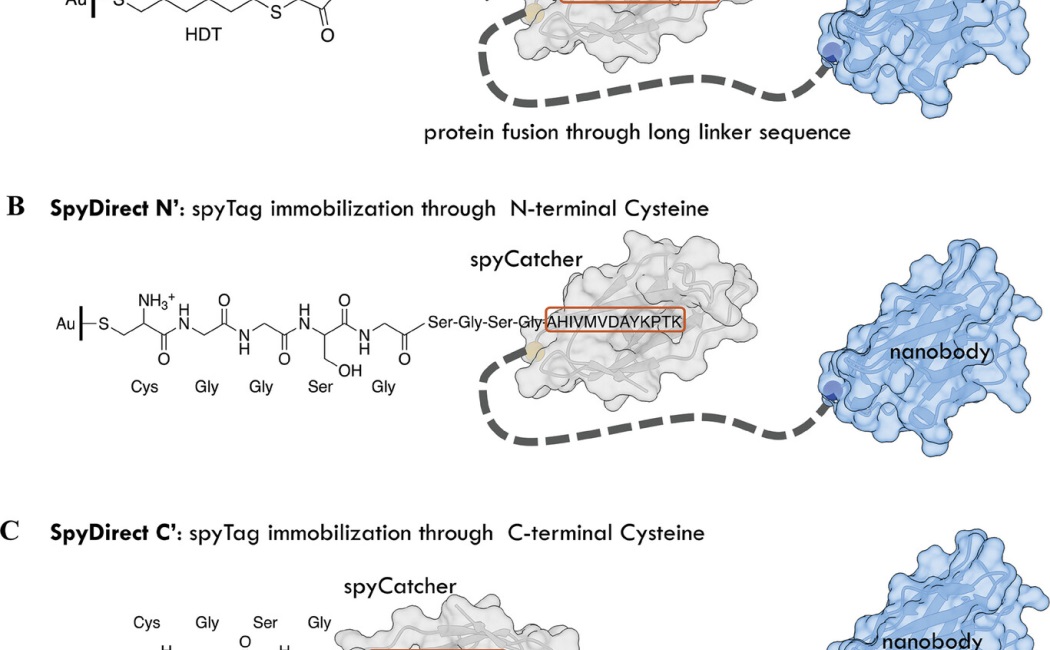
07 January, 2024
Electronic immunosensors are indispensable tools for diagnostics, particularly in scenarios demanding immediate results. Conventionally, these sensors rely on the chemical immobilization of antibodies onto electrodes. However, globular proteins tend to adsorb and unfold on these surfaces. Therefore, self-assembled monolayers (SAMs) of thiolated alkyl molecules are commonly used for indirect gold–antibody coupling. Here, a limitation associated with SAMs is revealed, wherein they curtail the longevity of protein sensors, particularly when integrated into the state-of-the-art transducer of organic bioelectronics—the organic electrochemical transistor. The SpyDirect method is introduced, generating an ultrahigh-density array of oriented nanobody receptors stably linked to the gold electrode without any SAMs. It is accomplished by directly coupling cysteine-terminated and orientation-optimized spyTag peptides, onto which nanobody-spyCatcher fusion proteins are autocatalytically attached, yielding a dense and uniform biorecognition layer. The structure-guided design optimizes the conformation and packing of flexibly tethered nanobodies. This biolayer enhances shelf-life and reduces background noise in various complex media. SpyDirect functionalization is faster and easier than SAM-based methods and does not necessitate organic solvents, rendering the sensors eco-friendly, accessible, and amenable to scalability. SpyDirect represents a broadly applicable biofunctionalization method for enhancing the cost-effectiveness, sustainability, and longevity of electronic biosensors, all without compromising sensitivity.